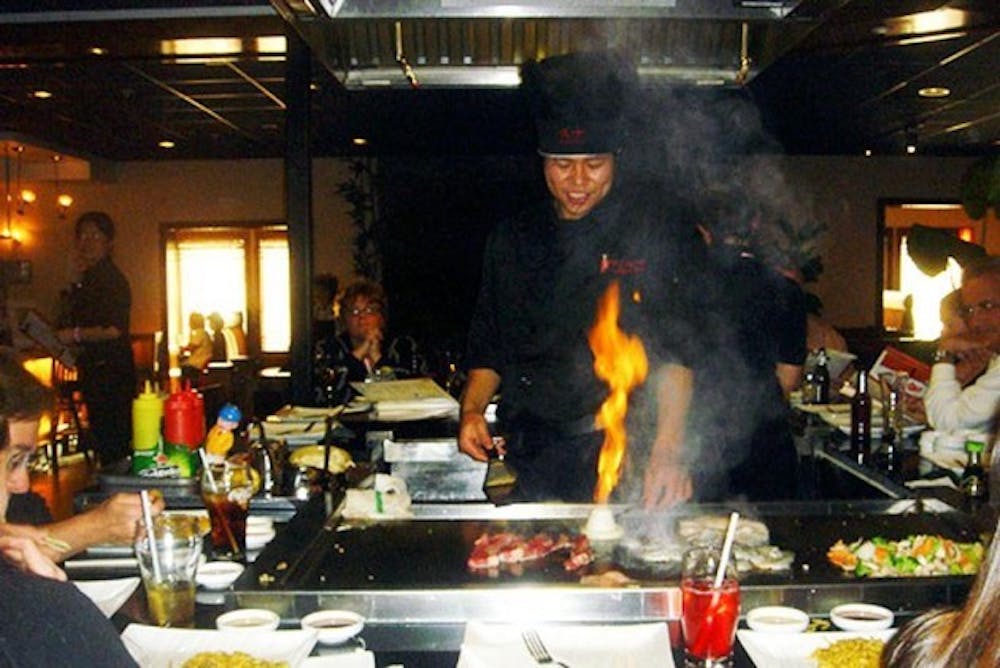"Sak?(c), Sak?(c), Sak?(c)!" a hibachi chef yells, pouring a stream of the Japanese alcohol into a customer's mouth using a condiment bottle.
This is the beginning of a typical lunchtime meal at Kyoto Japanese Restaurant, which is a five-minute drive from North Campus. The out-in-public chefs use the hibachi grill for two reasons: to prepare their patrons' meals over flames, and as a stage to perform.
With over 50 customers in the hibachi area, employees scurry around. They place orders and roll around carts that are filled with condiments, rice, mixed vegetables, lo mien noodles and meats.
"Are you ready?" a hibachi chef asks a man at his table.
The man, engaged in the performance, nods.
"All right, here we go," the chef proclaims, and with his stainless steel spatula, he chops up broccoli and catapulted the bits into the man's mouth. Other customers approach the grill to witness the exciting style of cooking.
It is not only a meal. It is an experience.
Located on Maple Road, Kyoto brings in patrons for the food and to observe the chefs, who use their lightning-fast hands to sculpt a miniature volcano of onions with meticulous and elegant technique.
"My favorite thing would be the different style that each [chef] has," said Evelyn Chang, a senior interdisciplinary social sciences major. "A bunch of hibachi chefs do the same things, but when one of them does something new and different, I'll remember that."
Selena Albright, a Buffalo native who is no stranger to the hibachi scene, enjoys the lively atmosphere as well.
"I've been to [Showa Hibachi], [Fuji Grill] and this is my second time here at Kyoto," Albright said. She enjoys how the chefs engage their customers in the cooking process.
Originally called "shichirin," hibachi-style cooking was introduced to the United States by Japanese chefs as an innovative way to cook using a charcoal-burning brazier with a grill.
It takes months of training for hibachi chefs to perfect their skills and feel comfortable performing in front of an audience.
Kyoto's manger, Beejah Kanhalangsy, was a hibachi chef for nine years and says chefs enjoy engaging their customers and getting them excited for their meal as much as they enjoy whipping up beautiful Japanese cuisine creations.
"As the chefs are cooking, they always explain what's coming up next with the ingredients and they put in a little flare into it with jokes," Kanhalangsy said.
Experienced chefs greet their audience before beginning the show. First, they cover the grill in oil - often in shapes like a smiley face - and set it ablaze. Then, they begin dicing up mixed vegetables, meats and other portions of the meal - all the while tossing food and squirting sak?(c).
Senior economics major Sherrod McRae enjoyed the entertaining flare of the chef's performance, which left him with a few fond memories.
"It's all interactive," McRae said. "Catching the food in my mouth has been my favorite experience here."
For customers like McRae, Kyoto's food performances offer a refreshing departure from mundane restaurant experiences.
If you keep your head on a swivel, the artistic style of hibachi will fly straight off the grill and into your mouth.
email: arts@ubspectrum.com





